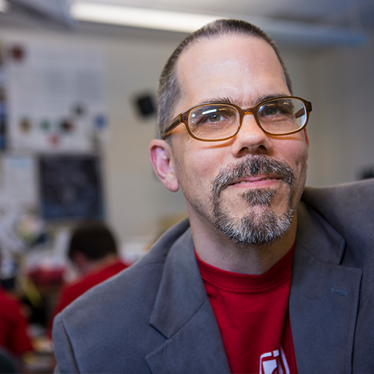The Secret to Collaboration
November 21, 2018By Dr. Sandy Antunes
"Don't compromise."
"There's no such thing as being stuck."
"Run away."
Statements like these might sound off-kilter for a professional engineer, but each holds a surprising amount of truth, when viewed properly.
To explain why, I'll be drawing on advice from a panel of graphic novel authors and artists, and mining their secrets for beating stress and collaborating effectively.
Good engineers take their work personally as well as professionally, and it's a given that we will have to team up with others. Group work can be stressful, but it also produces great outcomes. One way to optimize the collaboration process: don't compromise! This may seem counterintuitive, but consider what compromise amounts to. In essence, it means diluting the final work, settling for something less out of expedience.
Step back for a moment. Each of you is on the team because you are competent and capable. Each of you brings value. If the team is trying to compromise on a design, that's because you've all reached an impasse, a conflict of opinion, and you're feeling stress. To compromise in that case is to settle for a mushy middle that neither side wants, just for the sake of expedience and the desire to move past the problem. Just getting past it won't lead to the best work.
The solution is to pause, to set it aside and say "we can work it out," then to accumulate and add to the work to reach an answer everyone agrees on. Remind yourselves that you're all smart people and that you can work it through. Instead of falling back to a baseline compromise that neither side really likes, take a break to cool down then re-approach with the idea of building a solution that both sides ultimately agree will work. Basically, instead of settling, accumulate.
We also accept that collaborating means you don't always get your way, that you will have strong ideas that don't make it into the final product. It can be very hard to put forward an idea, then find the project is better served moving in a different way than you would do it. We're human, we have egos and we like control. So to better team up, also have a side project, a solo project, a non-collaborative project where it's just you.
Then, when you're feeling emotional about the direction the group project is taking, you can work on your side project and make every decision just the way you want, with no interference. Then you can then go back to the group work with less frustration and suitably refreshed.
Finally, feeling blocked or stuck on a project isn't the problem, but a symptom of something else. If you're getting hung on one design aspect, or feeling writer's block, or simply waking up not looking forward to work-- it's not you, it's the work or the framing. You went down a wrong fork, or you don't have time to focus. Stepping back, resting, or, hey, working on that solo project, are all ways to get around these invisible barriers. Keep this all in mind, and your next group project will soar!
Dr. Alex "Sandy" Antunes is professor of astronautical engineering at Capitol Technology University. Advice in this article is adapted from insights provided by Holly Black, Corey Godbey, and J. M. Lee during the 2018 FaerieCon 'graphic novels' panel.



